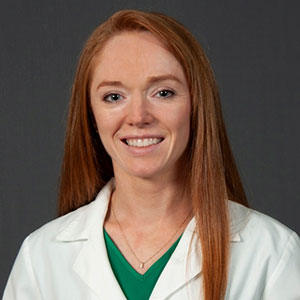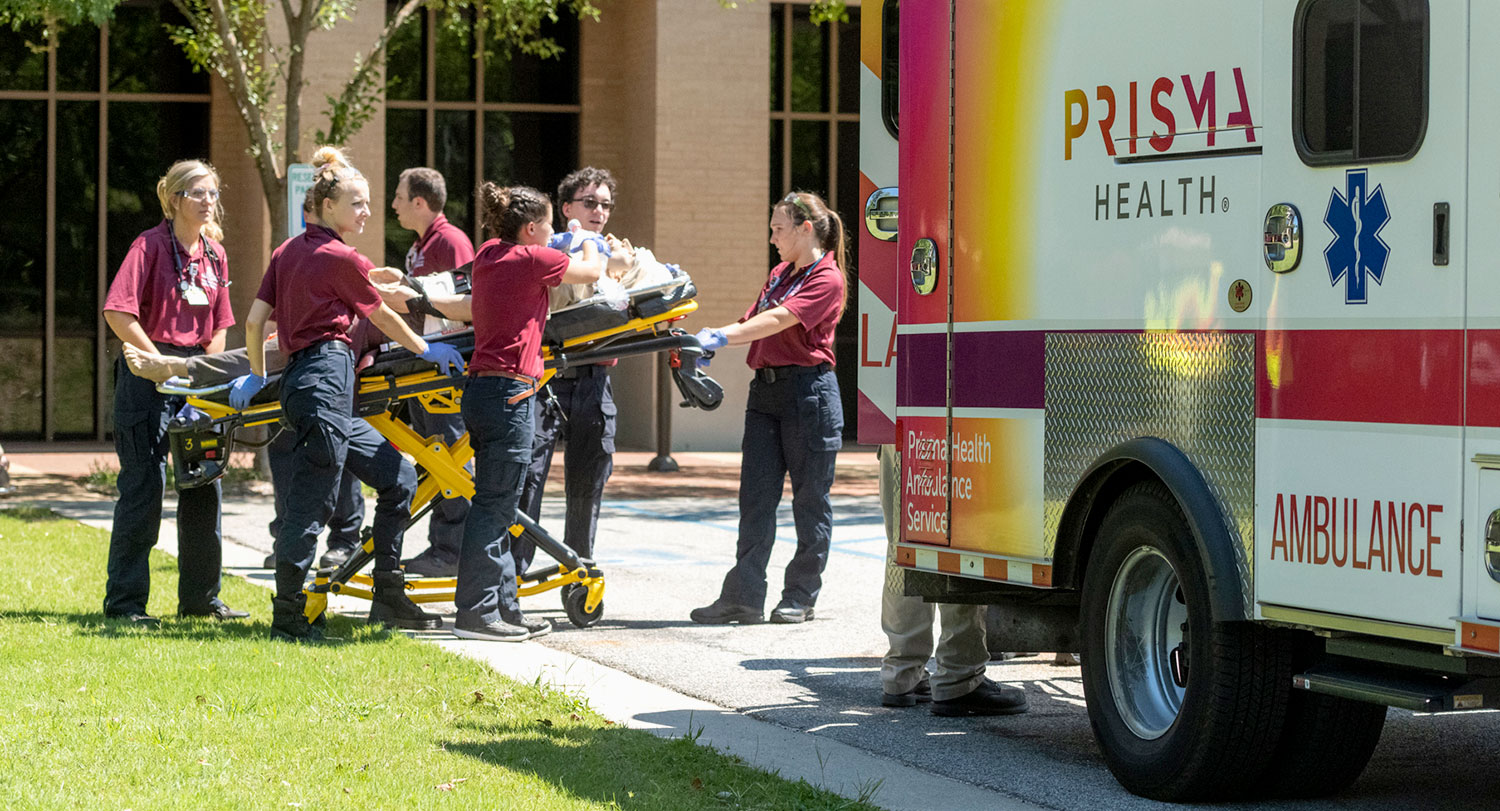
Dr. Elizabeth Mannion, EMT training program director
USC School of Medicine Greenville was one of the first schools in the country to integrate Emergency Medical Technician training and certification into its first-year medical curriculum. The immersive program allows students to see firsthand the many challenges of health care delivery.
EMT training program director Dr. Elizabeth Mannion takes us behind the scenes to explain what students learn and how those skills are applied throughout medical school and in the real world.
Why start your students with this EMT program?
Emergency medicine is the gateway for many patients to enter the health care experience, and it’s the same for our students. This course offers a well-rounded approach to learning and builds foundational skills. Because it’s the first five weeks of med school, it gives them an opportunity to get their feet wet and learn about expectations.
My hope is that they never forget the lifesaving skills they learned during EMT training.
What are the top skills students learn during EMT training?
How to communicate with patients and meet them where they are. It’s crucial to patient care to make sure they feel comfortable, heard and respected. On a single call, you could be dealing with family members watching, mental health responses unfolding or the need to communicate amongst teams of first responders. You have to stay confident, humble and disciplined.
Understanding the beginning of the patient’s medical experience, seeing patients in their homes and communities helps responders make a better field assessment and handoff for treatment. It also gives students a broader awareness of issues their community is facing.
Learning to stay calm and perform objectives during an emergency. Rapid patient assessment and basic, but important, interventions such as ventilation and providing oxygen are much harder to evaluate for abnormalities when you’re stressed.
There’s something in this program for everyone. Regardless of where their medical career takes them, specialists have to treat emergencies, too.
Once they’ve earned their certification, what type of emergencies do students respond to during ride-a-longs?
Prisma Health Ambulance Service supports 100 percent of our EMT program’s needs, and coordinates hands-on ride time for the 110 students participating in the program. Ride-alongs expose students to an array of 911 calls as well as interfacility transport. Depending on day and location, students run an average of 10 calls during a 12-hour shift. They also get to observe critical care paramedics who have extra skill sets in emergent patient care.
You will, without a doubt, get to ride on an ambulance with lights and sirens to some incredible emergencies.
How does SOMG prepare students for the traumatic scenes they might encounter during ride-alongs?
Prior to their first ride-along, we teach students to focus on maintaining themselves through good sleep hygiene, nutrition and mental wellness. They also take a resiliency class. Julian (Jules) Green is a licensed clinical social worker who talks to them about resilience and debriefing education as well as some of the more stressful things they may see on the job. We also have an open-door policy so students can sit and talk with instructors whenever they need.
After the simulations, classroom learning and ride-alongs, how does the EMT training conclude?
Our students participate in Disaster Day. It’s an annual mock scenario that literally brings all of their emergency medicine training together. This singular event allows students to deal with mass casualties, triage patients under high- stress situations, and use procedural skills like lifting and moving, taking vitals and transporting patients. They can immediately see how the useful skills they’ve learned are applicable to the real world.
How does a large-scale simulation like Disaster Day teach teamwork?
Interacting with the fire department, police, 911 dispatch and other responders helps students process how our emergency response community works. Understanding terminology used in the field and being able to quickly verbalize patient evaluations helps them provide the best possible patient care. Learning how to work together with other agencies in an event like Disaster Day prepares them for rotations and the pace of the real world.
It's well-known that there are nursing and physician shortages across the country. How does the SOMG lifestyle medicine program address burnout?
The experience now is hugely different than my experience with medical school in 2010. The conversations are changing. At SOMG, we’re normalizing the discussion around fatigue. There’s no merit badge to go without and still try to function. We’re encouraging students to make time for electives that allow them to learn to manage stress through meditation, yoga and gardening, and explore opportunities to do things outside of medicine. It’s much more apparent now that this approach makes you a better clinician in the end.
What’s one thing every prospective SOMG student should know about the EMT program?
You will, without a doubt, get to ride on an ambulance with lights and sirens to some incredible emergencies.
Dr. Elizabeth Mannion is a clinical assistant professor of Emergency Medicine at the School of Medicine Greenville and an Emergency Medicine physician for Prisma Health. A decorated U.S. Army Reservist, she deployed under Operation Enduring Freedom and worked in a combat support hospital in Kuwait. Her current research focuses on prehospital blood transfusions, deployed by ground EMS units for patients with traumatic or medical causes of hemorrhage.
To learn more about Mannion and the EMT program, listen to Episode 8 of the Just What the Doctor Ordered podcast.
